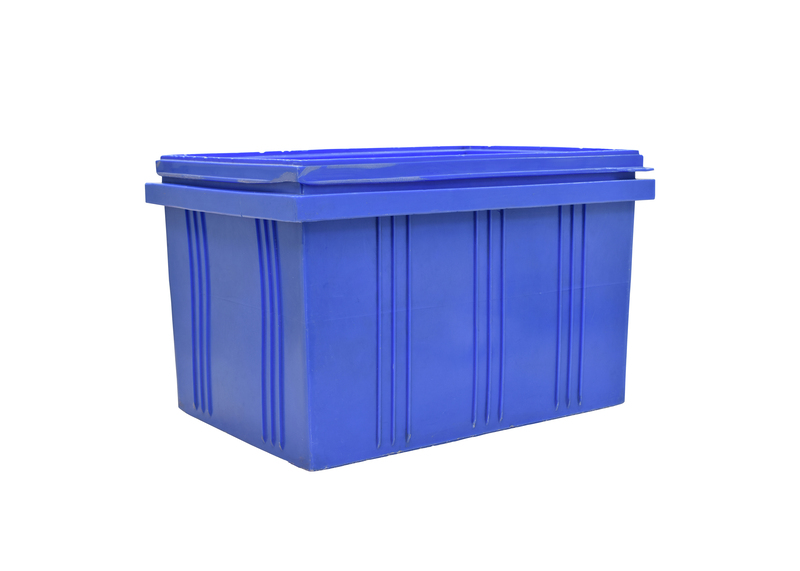Mastering the Art of Lifting Heavy Objects Solo: The Ultimate Guide
Lifting heavy objects by yourself can seem daunting, but with the right techniques and focus on safety, it's entirely achievable. Whether you're moving furniture, managing tools at a job site, or rearranging your home, learning how to lift heavy items without help is a valuable skill that prevents injuries and boosts efficiency. In this comprehensive guide, we'll walk you through everything you need to know about mastering the art of lifting heavy objects solo.
Why Learn to Lift Heavy Objects Alone?
There are several compelling reasons to develop this skill:
- Independence: Handle tasks even when help isn't available.
- Safety: Reduces the risk of common injuries linked to improper lifting.
- Time-Saving: Move items on your own schedule without waiting for assistance.
- Cost-Efficient: Avoid paying for movers or extra staff for routine heavy-lifting jobs.
The Importance of Proper Lifting Techniques
Incorrect lifting is a common cause of injuries such as back strains, herniated discs, and muscle tears. According to health experts, up to 80% of adults experience back pain at some stage. Thus, mastering safe solo heavy lifting strategies is crucial for preventing long-term complications.

Preparing for Heavy Lifting: The Solo Mover's Checklist
Before you dive into lifting, preparation is key. Following a structured checklist will enhance your safety and ensure the task gets done efficiently.
1. Assess the Object
- Know the weight: Can you realistically lift it alone?
- Assess shape and size: Irregular or large items require careful handling.
- Check for obstacles: Plan your route in advance and remove tripping hazards.
2. Wear Appropriate Clothing
- Opt for comfortable, non-slip shoes.
- Avoid loose clothing that might snag or restrict movement.
- Consider gloves for a better grip, especially on rough or slippery items.
3. Warm Up Before Lifting
Stretching and light activity increases blood flow to your muscles and reduces the risk of injury. Simple arm circles, hip rotations, and leg stretches are effective ways to limber up before moving heavy objects solo.
Step-by-Step Techniques: How to Lift Heavy Objects by Yourself Safely
Proper form is essential in solo heavy lifting. Follow these steps to ensure you move heavy loads efficiently and safely.
Step 1: Position Your Feet
- Stand shoulder-width apart for a strong base.
- One foot should be slightly in front to maintain balance.
Step 2: Bend at the Hips and Knees
- Squat down -- never bend at the waist.
- Keep your back straight and look forward to avoid strain.
Step 3: Secure a Firm Grip
- Hold the object as close to your body as possible.
- Use both hands for balance and control.
Step 4: Lift with Your Legs
- Engage your core and push up using leg muscles, not your back.
- Keep the item close as you stand up.
Step 5: Move Smoothly
- Take small, steady steps.
- Avoid twisting your spine while carrying--turn your whole body if necessary.
Step 6: Set Down Carefully
- Bend your knees as you lower, keeping your back straight.
- Maintain control until the object is safely on the floor.
Essential Tips for Lifting Heavy Items Solo
- Know Your Limits: If the object is too heavy, don't risk it.
- Use Equipment: Leverage tools such as dollies, straps or sliders.
- Take Breaks: Fatigue increases the risk of injury; don't rush.
- Clear the Path: Ensure no obstacles are in your way.
- Communicate: Let someone know you're moving something heavy solo if possible in case you need help.
Maximizing Safety: Common Mistakes to Avoid
- Bending at the waist instead of the knees.
- Trying to lift beyond your physical limit.
- Carrying objects too far from your body, multiplying strain.
- Twisting or jerking motions when changing directions.
- Lifting with one hand for convenience rather than both hands for safety.
Tools & Equipment Every Solo Lifter Should Use
Implementing the right tools can make a big difference in how efficiently and safely you move heavy objects by yourself. Here are some must-have items:
- Furniture Sliders: Place under heavy objects to glide them across the floor with minimal effort.
- Hand Truck (Dolly): Great for boxes, electronics, and appliances.
- Lifting Straps: Help you carry objects using stronger muscle groups and take the strain off your back.
- Work Gloves: Protect hands and bolster grip.
- Moving Blankets: Prevent scratches and provide padding for delicate items.
How to Use Lifting Equipment Effectively
For truly heavy or awkward objects, integrating lifting aids is vital. Here's how:
- Furniture Sliders: Gently tilt the object and place sliders under each corner, then push or pull carefully.
- Hand Trucks: Slide the lip underneath, secure the item, tilt the truck back, and wheel it to its destination with a steady pace.
- Lifting Straps: Wrap around the base of the object and use your shoulders to bear the load, not your back.
Special Situations for Solo Heavy Lifting
Lifting Bulky or Awkward Objects Alone
Oddly shaped items like sofas, mattresses, or pianos require special attention:
- Disassemble If Possible: Remove shelves, legs, or detachable parts first.
- Wrap for Grip: Use blankets or towels to avoid slipping, especially with smooth surfaces.
- Slide Instead of Lift: Use sliders or even cardboard underneath to avoid carrying altogether.
Navigating Stairs with Heavy Objects
This is especially challenging--but not impossible--if you must master the art of lifting heavy objects solo:
- Plan Each Step: Know exactly where you'll pause and how to set the object down if needed.
- Go Slowly: Maintain balance and ensure your feet are securely on the step before taking the next.
- Use Handrails: Wherever possible, utilize railings for additional support.
Preventing Injuries: Top Safety Practices
- Listen to Your Body: Stop immediately if you feel pain or discomfort.
- Don't Rush: Moving too quickly results in accidents and injuries.
- Take Frequent Breaks: For very heavy items, break up the task and rest between lifts.
- Stay Hydrated: Lifting is physically demanding work--keep water nearby.
- Keep First Aid Handy: Always know where your first aid kit is just in case.
Strengthening Your Body for Solo Lifting
Building strength and flexibility makes lifting heavy objects alone much safer and easier. Incorporate these exercises into your routine:
Core-Strengthening Exercises
- Planks: Hold for 30-60 seconds to build core stability.
- Dead Bugs: Strengthen the lower abdominals and help control movement.
Leg and Back Strengtheners
- Squats: Target the big muscles needed for lifting from the legs, not the back.
- Deadlifts: Mimic the natural motion of picking up objects (use minimal weights for form).
Flexibility Moves
- Hamstring and Hip Stretching: Ensures a greater range of motion when bending and lifting.
- Shoulder Rolls: Loosen upper body tension.
Consistency matters--aim to exercise at least 2 to 3 times per week for noticeable improvement in your solo heavy lifting capabilities.

Frequently Asked Questions About Solo Heavy Lifting
What is the safest way to lift heavy objects alone?
Maintain a straight back, bend your knees, keep the object close, and lift in a slow, controlled manner using your legs--not your back.
Are lifting straps really helpful for solo lifting?
Yes! Lifting straps distribute weight more evenly, reduce back strain, and allow you to use larger muscle groups for safer, more efficient lifts.
How heavy is too heavy to lift alone?
It depends on your body weight, strength, and experience. As a rule of thumb, avoid lifting objects heavier than 25%-30% of your body weight if you're untrained. When in doubt, ask for help or use mechanical aids.
What are signs that I should not attempt to lift something by myself?
If you notice joint pain, lack of grip, an unsteady stance, or simply feel unsure, it's best to avoid the task or seek assistance.
Conclusion: Lifting Like a Pro--The Solo Way
Mastering the art of lifting heavy objects solo is about preparation, proper technique, and self-awareness. With the comprehensive tips outlined above, you can boost your confidence, protect your body, and become truly independent. Always remember that safety comes first--there's no shame in pausing, adjusting, or asking for backup for particularly tricky loads.
Lifting heavy objects alone is a skill that improves with every safe, successful move. Implement these solo heavy lifting best practices today, and you'll be ready to tackle even the most daunting moving tasks with ease!



